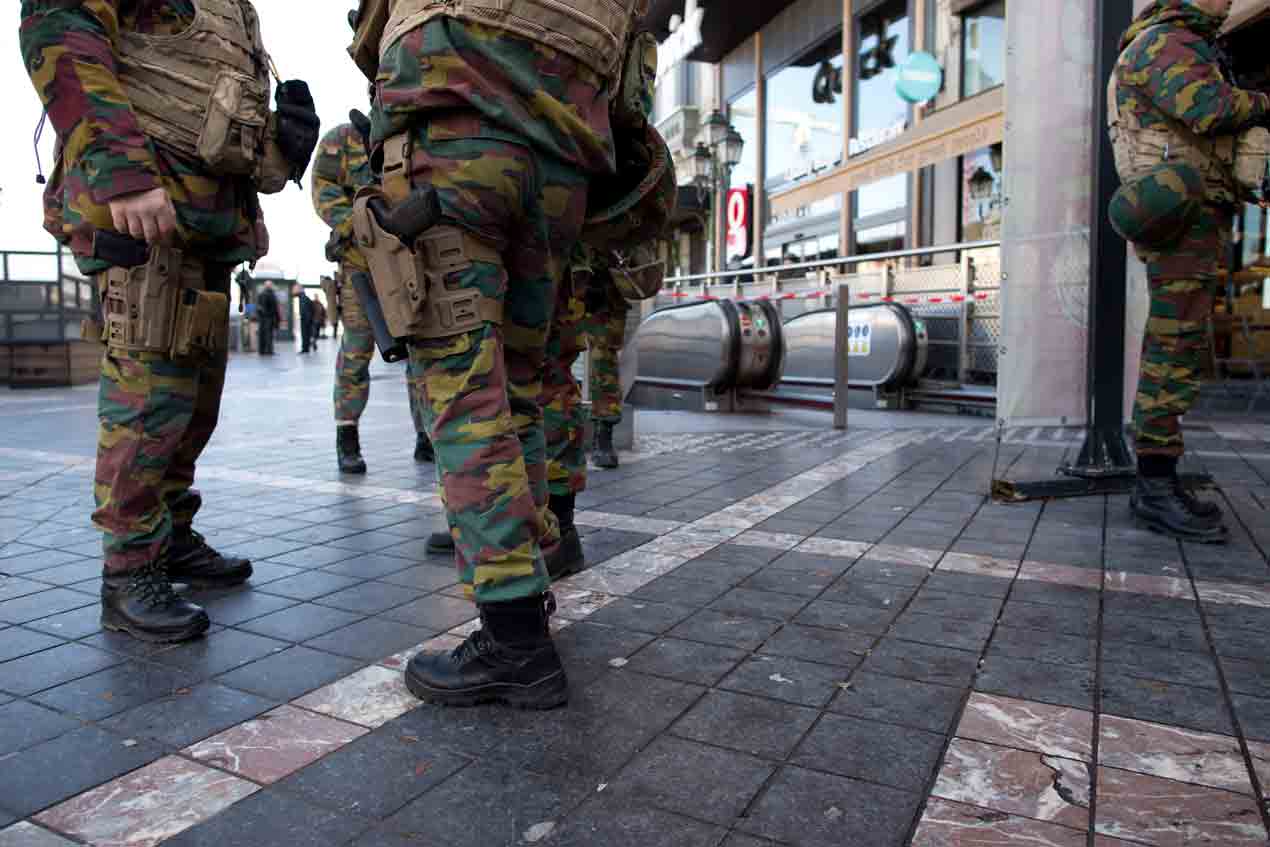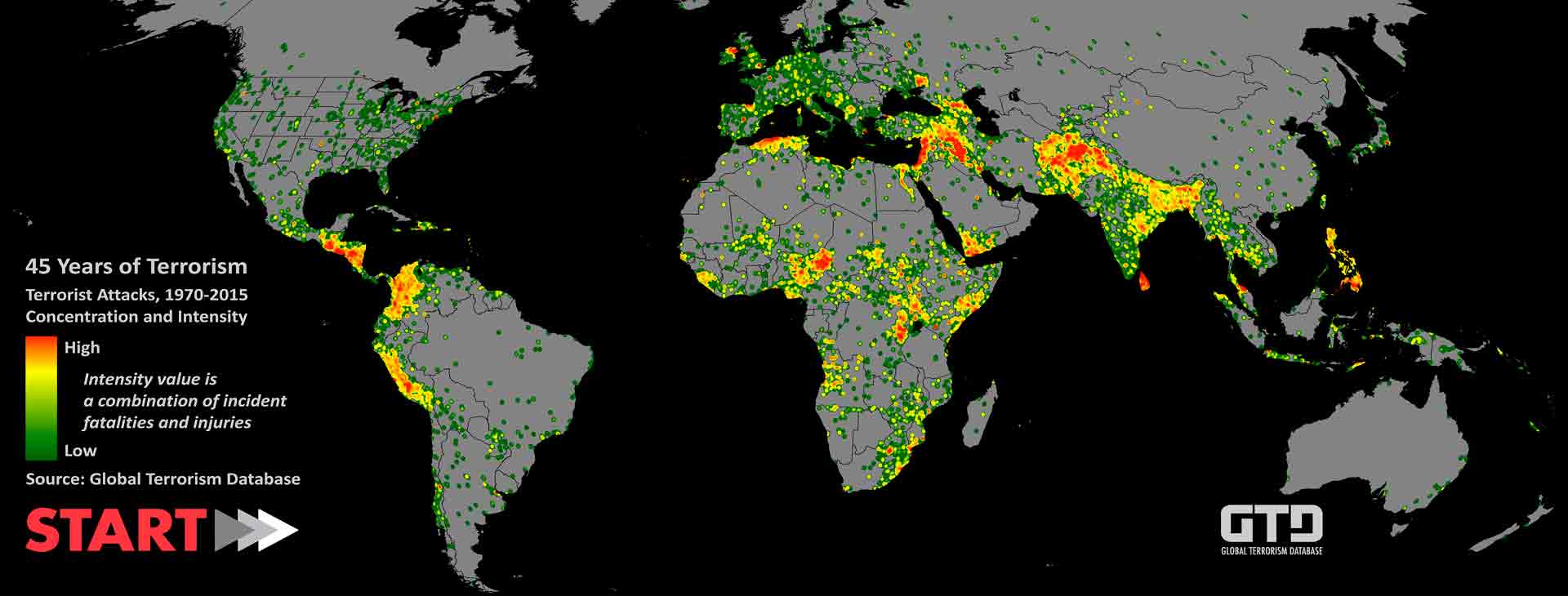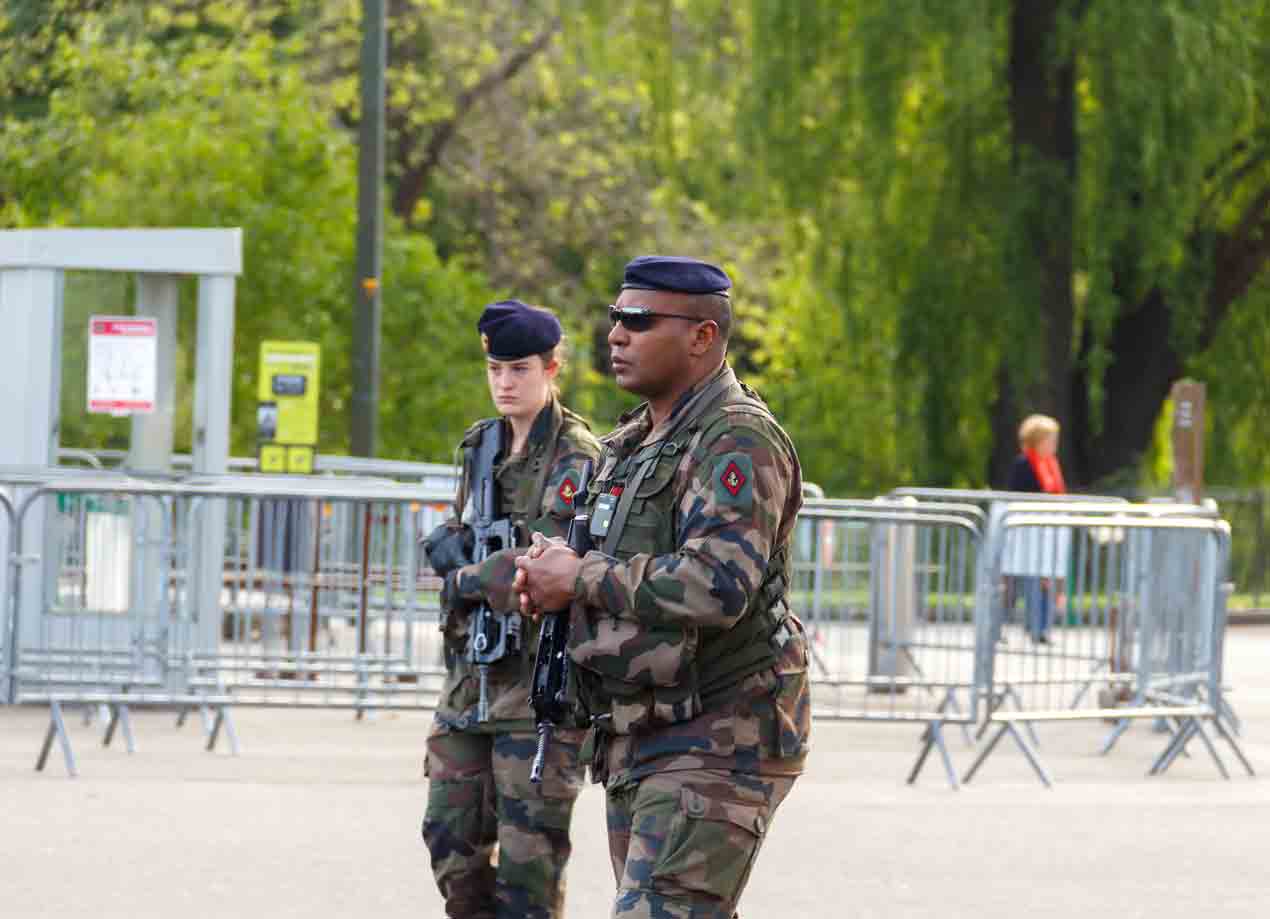Terrorists: What Motivates Them To Act Alone?
Radicalisation does not fully explain why individuals carry out terrorist attacks. A disconnected-disordered profile can be a contributing factor.
17 March 2017

According to the Global Terrorism Index, lone wolf attackers are the main perpetrators of terrorist activity in the West. Since 2006, 98% of all deaths from terrorism in the US have resulted from attacks carried out by lone actors, resulting in 156 deaths, according to the index.
Notable lone wolf terrorist attacks in the West have included:
- On May 2014 in Belgium, four people were killed by a shooting at the Jewish Museum in Brussels by a former ISIL member.
- In 2012, again in Brussels, the Imam of a Shiite mosque was killed by a firebomb.
- On 7 January 2016 in Paris, a man wearing a fake explosive belt attacked police officers
- In June 2016, a man kills a police commander and his partner outside their Paris home
- On July 14, Bastille Day, a lone actor drove a cargo truck into a crowd celebrating Bastille Day in Nice, killing 85 people.
In the United States, according to The American Lone Wolf Terrorism Database, between 1940 and 2013 there were 98 known cases of attacks that fit the definition of "lone wolf'—38 of those cases occurred before the attacks on the World Trade Centre, and 60 took place after 9/11. Since 9/11, lone wolves have killed or wounded 47 members of the military, according to the database. Lone wolves have also attacked military bases or have been arrested in thwarted attacks against military installations. In July, 2015, a man shot dead four marines in an attack on the Navy Operational Support Center in Tennessee.
Lone-wolf terrorist attacks, as opposed to state-sponsored attacks or those carried out by a group of individuals, are the most difficult to detect, predict and comprehend.
CLARK McCAULEY, a Professor of Psychology and co-director of the Solomon Asch Centre for Study of Ethnopolitical Conflict at Bryn Mawr College, and SOPHIA MOSKALENKO a post-doctral Research Fellow at START Bryn Mawr College and lead investigator on research projects for START, dissect what motivates individuals to carry out lone-wolf terrorist attacks.
Recent events have brought increased attention to a relatively rare form of terrorism: lone-wolf terrorists. Lone-actor terrorists are those who plan and carry out an attack without assistance from others. They see themselves as representing some larger group or cause and may have some experience in a group, organisation or social movement related to this cause. Their grievance is thus shared by many, although their attack is carried out alone.
Lone-wolf terrorists are risking life and liberty for their cause. Why would any individual take this kind of risk? More generally, why would any individual choose to sacrifice for a cause? The usual answer to this question is that group and organisational pressures move us to do what we would not choose to do if we considered only our personal welfare(). Small group dynamics can provide rewards for those who take risks and make sacrifices for the group, and punishments for those who do not. Organisations similarly provide rewards for those—firemen, police, soldiers—who take risks for organisational goals, and punishments for those who shirk their duty.
The psychological puzzle presented by the lone-wolf terrorist is that the individual takes risks and makes sacrifices as a free choice, not subject to social pressures. The lone-wolf does not feel the power of group dynamics and group pressures, and does not have institutional support. The puzzle then is why an individual would freely choose violence for a cause, knowing that the choice will be costly in terms of self-interest.
RADICAL OPINIONS ARE NOT ENOUGH
One possible answer to the puzzle is that extreme or fanatic beliefs push some individuals to violence. This possibility implies a single dimension of radicalisation, ranging from individuals who care nothing about a cause to those who believe in the cause so strongly that they are ready to risk their lives for it. It is plausible and even intuitive that radical ideas produce radical behaviour, and Silber and Bhatt popularised the single-dimension model in their N.Y.P.D. report, Radicalization in the West: The homegrown threat. The single-dimension model is similarly embodied in the metaphor that groups advancing extremist ideas are a “conveyor belt” to terrorism. In this view, terrorist violence is the radical behaviour that proceeds from radical ideas.
More recently, however, two kinds of evidence have contradicted the single-dimension model of radicalisation. First, radical opinions are common, but terrorists are few and lone-actor terrorists even fewer. The 2007 Pew poll of US Muslims included the following item: Some people think that suicide bombing and other forms of violence against civilian targets are justified in order to defend Islam from its enemies. Other people believe that, no matter what the reason, this kind of violence is never justified. Do you personally feel that this kind of violence is often justified to defend Islam, sometimes justified, rarely justified, or never justified?
In 2007 and again in 2011, about 8% of US Muslims said that this kind of violence is often or sometimes justified. Eight percent of the approximately one million adult US Muslims projects to approximately 80,000 who justify suicide bombing against civilian targets in defence of Islam. But only hundreds of US Muslims have been arrested for violence-related offences. In other words, fewer than one in a hundred who justify suicide bombing are trying to do any kind of political violence. Even fewer undertake lone-wolf violence.
Secondly, research on de-radicalisation has highlighted the difference between extreme action and extreme opinion. Some captured jihadists are willing to give up violent action but not ready to give up extremist opinions. Others are willing to give up both violent action and extremist opinions. The first kind of change is de-radicalisation of action without de-radicalisation of opinion. The disjunction of action and opinion is not consistent with the idea that it is extreme opinion that produces extreme action.
From this and other evidence Leuprecht, Hataley, McCauley and Moskalenko argued the need to consider radicalisation of action as a separate problem from radicalisation of opinion. They suggested a two-pyramid model of radicalisation, with radicalisation of opinion represented in one pyramid and radicalisation of action in a separate pyramid.
The base of the Opinion Pyramid are those with no sympathy for a cause; the second level are those who sympathise with the cause, but do not justify violent means; the third level are those who justify violent means (suicide bombing in defence of Islam); and the apex of the pyramid are those who feel a personal moral obligation to take up violence in defence of the cause.
Turning now to the Action Pyramid; the base of the pyramid are those that do nothing for a cause. The second level are those who participate in legal political action for the cause (activists); the third level are those who break the law in support of the cause (radicals, including violence against property); and the apex of the pyramid are those who attack civilians in support of the cause (terrorists).
To return to our puzzle, the two-pyramid model means that extreme opinions cannot be taken as sufficient cause or even the proximate occasion of extreme behaviour. More specifically, extremist opinions are not an adequate explanation of the self-disregarding behaviour of lone-wolf terrorists. There are thousands of Muslims with extreme ideas for every lone-wolf Muslim terrorist.

THE DISCONNECTED-DISORDERED PROFILE
If radical ideas cannot explain lone-wolf terrorists, perhaps bottom-up empirical studies can unlock the puzzle. Spaaij examined 88 cases of lone-wolf terrorists aggregated across 15 Western countries and found that lone actors are likely to suffer from some form of psychological disturbance and tend to be loners with few friends. Gill, Horgan, & Deckert put together an international collection of 119 mostly lone-actor terrorists; no single profile was identified but many of the lone-actors seemed to be socially isolated.
In the most methodologically sophisticated study yet conducted, Gruenewald, Chermak and Freilich compared lethal attacks by lone-actor and group-actor US far-right extremists. Results indicated that the lone actors were younger and more likely to have a military background, more likely to suffer mental illness, and more likely to experience disconnection by separation, divorce, or death of a partner.
Expanding the search, McCauley, Moskalenko, and Van Son sought to learn about the characteristics of lone-wolf terrorists by looking for the common characteristics of two kinds of mostly lone-actor violent offenders: assassins and school attackers. The common characteristics included grievance, depression, unfreezing (broken social ties), and experience with weapons outside the military. These four characteristics suggest the importance of means and opportunity for perpetrating violence. Grievance is a motive for violence, weapons experience provides a means, and depression and unfreezing lower the opportunity cost of violence as the perpetrator has less to lose.
An illustration of these characteristics can be made for the case of Major Nidal Malik Hasan. Major Hasan turned to the Koran after the death of his parents and seems to have had no close relationships after he was transferred to Fort Hood, and was about to be transferred to Afghanistan (unfreezing). He saw himself discriminated against as a Muslim (personal grievance) and saw the war on terrorism as a war on Islam (political grievance).
He brought two weapons to his attack, one a sophisticated ‘cop-killer’ pistol for which he purchased a laser sight indicating experience with weapons beyond whatever slight weapons training the US Army provides for physician-psychiatrists. So far as we can ascertain, Major Hasan showed no signs of depression, although he was severely stressed at the prospect of joining the fight against Muslims in Afghanistan. Thus, Major Hasan had three of the four characteristics common to assassins and school attackers: unfreezing, grievance and weapons experience.
Taken together, these results provide a developing indication that grievance-fueled lone-wolf terrorists are likely to have weapons experience, depression or other mental disorder, and temporary or chronic social isolation. McCauley & Moskalenko call this the disconnected-disordered profile. Future research may discover characteristics that differentiate lone-actor terrorists from assassins and school attackers, or it may turn out that lone-wolf terrorists are part of a larger phenomenon of grievance-motivated lone-actor violence.

THE CARING-COMPELLED PROFILE
There are individuals who are not loners and not suffering any kind of mental disorder but who nonetheless undertake lone-wolf violence. Here we have space to consider only one such case. Mohammad Momin Khawaja is in a Canadian prison for developing a radio-igniter for a fertiliser bomb planted by British jihadists. His first step toward radical action was flying to Pakistan to try to join the Taliban after the US invasion of Afghanistan in 2001.
He was too late and returned home to Canada, where he became involved in the bomb plot. But what is notable in this case is that Khawaja was determined to go to Afghanistan on his own, without being a member of any radical or terrorist group. His individual decision to join the fight in Afghanistan made him a lone-wolf terrorist. But he had none of the disconnected and disordered profile. He had a well-paid job as an IT consultant, he lived at home in a loving family, and he had no signs of mental disorder and no weapons experience.
What he did have was a collection of jihad videos that showed Muslims being victimised by Western power and fighting back. He asked others to watch these videos, from which it is a reasonable inference that he thought they were persuasive. These videos are not Koranic education, they are designed to elicit emotions: outrage at victim’s suffering, shame at doing nothing while others are fighting back, pride at seeing Muslims successfully attacking Western forces.
Of course, many Muslims have watched jihad videos without joining jihad. Khawaja appears to have been unusual in his capacity for empathy, to the point where the suffering of others made him feel a personal responsibility to join their fight. McCauley and Moskalenko call this the caring-compelled profile of lone-wolf terrorism. The capacity for empathy or sympathy is generally seen as quintessentially human and eminently humane. Here we have a hint that there can be a dark side to caring greatly about others. Individuals can kill for love, including love for victims.
Research has indicated that the pathways to participating in a terrorist group are many and too varied to admit the possibility of a profile of individual characteristics that can identify potential terrorists. But there remains the possibility that lone-actor terrorists—those who act without group or organisational support—may share characteristics that could provide a useful profile of potential for lone-actor violence.
Here we have suggested that there may be at least two profiles for lone-actor terrorists. Statistical studies indicate a disconnected-disordered profile: individuals with a grievance and weapons experience who are socially disconnected and stressed with psychological disorder. But there are lone-wolf cases, such as Momin Khawaja, who have social skills, solid social connections and no sign of mental disorder. These cases tentatively point to a caring-compelled profile: individuals who feel keenly the suffering of others and a personal responsibility to revenge this suffering. We suspect that the caring-compelled profile is less common than the disconnected-disordered profile—not least because self-sacrifice for others is less common than self-interest—but this hypothesis will have to be tested as we learn more about lone-wolf terrorism.
ABOUT THE AUTHORS
Clark McCauley is Professor of Psychology and co-director of the Solomon Asch Centre for Study of Ethnopolitical Conflict at Bryn Mawr College. His research has focused on the psychological foundations of ethnic conflict, genocide, and terrorism. He is a lead investigator for the National Consortium for Study of Terrorism and Responses to Terrorism (NC-START). With Dan Chirot he is author of Why Not Kill Them All? The Logic and Prevention of Mass Political Murder (2006), and with Sophia Moskalenko he is author of Friction: How Radicalization Happens to Them and Us (2011).
Sophia Mosklenko is a Postdoctral Research Fellow at START Bryn Mawr College and lead investigator on research projects for START.
REFERENCES
Sophia Moskalenko and Clark McCauley “The psychology of lone-wolf terrorism.” Counseling Psychology Quarterly, (2011) 24(2), pp. 115-126.
Mitchell Silber and Arvin Bhatt, “Radicalization in the West: The homegrown threat.” (2007). Accessed 2 August 2013 at http://www.nypdshield.org/public/SiteFiles/documents/NYPD_Report-Radicalization_in_the_West.pdf
Christopher Caldwell, “After Londonistan.” New York Times Magazine (25 June 2006).
Pew Research Center, “Muslim Americans: Middle class and mostly mainstream.” (2007). Retrieved 1 December 2012 from http://pewresearch.org/assets/pdf/muslim-americans.pdf.
Pew Research Center, “Muslim Americans: No signs of growth in alienation or support for extremism.” (2011). Retrieved 23 May 2013 from http://www.people-press.org/2011/08/30/muslim-americans-no-signs-of-growth-in-alienation-or-support-for-extremism
Tore Bjorgo and John Horgan (eds.), “Leaving terrorism behind: lndividual and collective disengagement.” New York: Routledge (2009).
Christian Leuprecht, Todd Hataley, Clark McCauley, and Sophia Moskalenko, “Narratives and counter-narratives for Global Jihad: opinion versus action.” In Countering Extremist Narratives, E.J.A.M Kessels (Ed). “The Hague: National Coordinator for Counterterrorism” (NCTb). (2010), pp. 58 - 70.
Ramon Spaaij, “Understanding lone wolf terrorism: Global patterns, motivations and prevention.” New York: Springer (2012).
Paul Gill, John Horgan , and Deckert, Paige. “Bombing alone: Tracing the motivations and antecedent behaviours of lone-actor terrorists.” Journal of Forensic Science. (in press).
Jeff Gruenewald, Steven Chermak, and Joshua Freilich, "Distinguishing “loner” attacks from other domestic extremist violence: A comparison of far-right homicide incident and offender characteristics.” Criminology and Public Policy, 12 (1) (in press).
Clark McCauley, Sophia Moskalenko, and Benjamin Van Son, “Characteristics of lone-wolf violent offenders: A comparison of school attackers and assassins.” Perspectives on Terrorism, 7(1) (2013), pp. 4-24.
James McKinley and James Dao, “Fort Hood gunman gave signals before his rampage.” New York Times (Nov 8, 2009).
Clark McCauley and Sophia Moskalenko, “Western Muslims volunteering to fight in Syria and Iraq: Why do they go, and what should we do?” UNICRI Freedom from Fear. (2015).
Clark McCauley and Sophia Moskalenko, “Toward a profile of lone-wolf terrorists: What moves an individual from radical opinion to radical action?” Terrorism and Political Violence, 26, no. 1 (2014), pp. 69-85.
Clark McCauley and Sophia Moskalenko, “Friction: How radicalization happens to them and us.” New York: Oxford, 2011.